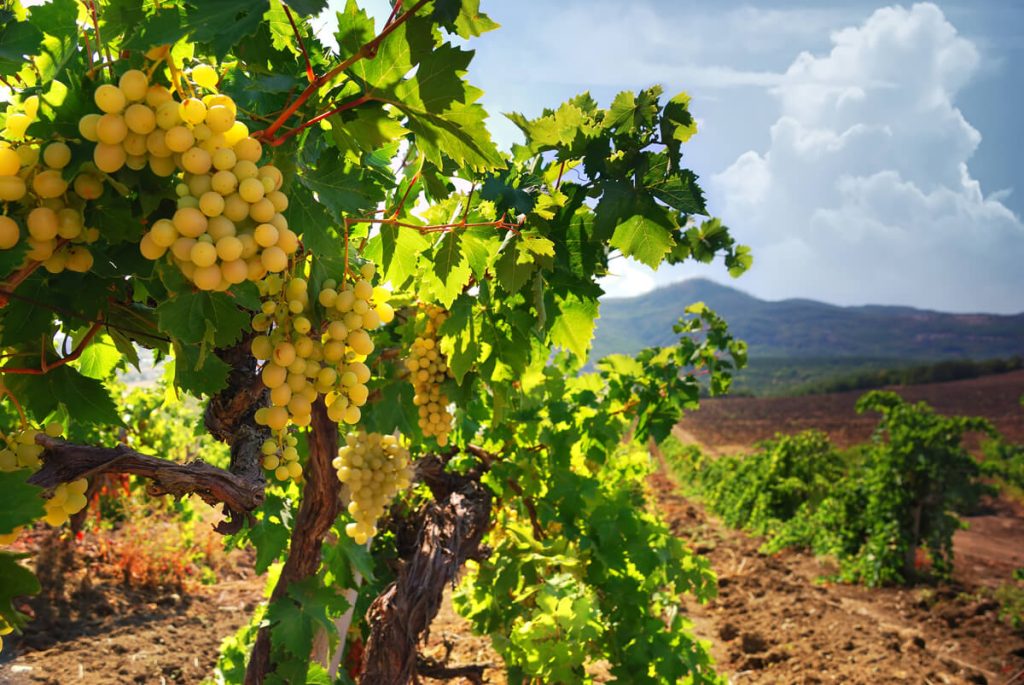General information about Austria
Austria is one of the most economically developed countries in the world with a balanced economy in which all sectors are developed, from tourism and agriculture (including winemaking), to industry and machine tools. In terms of nominal GDP per capita, it ranks twelfth in the world with an indicator of $56,802 (nominal, 2023). The population of Austria is 8.9 million and the most populated cities are Vienna with 1.5 million, Graz 237,000, and Linz that has 203,000 inhabitants.
Wine production in Austria
Austria has a developed wine industry, with vineyards mainly located in three wine regions: lower Austria in the north of the country, Burgenland in the east, and Styria to the south. The total area of vineyards covers an estimated 44,500 hectares, and the total number of wineries and vineyards is about 10,000, who together cultivate more than thirty authorized grape varieties. In total, 200,530,000 litres of wine was produced in Austria in 2022.
In 2022, Austria exported 68,200,000 litres of wine with an estimated value of €232m. Export price per litre reached a record level of €3.40.

Wine distribution in Austria
In 2022, 237,000,000 litres of wine were consumed in Austria. The main distribution channels for wine in Austria include:
a) On-Trade and events which accounted for 57.6% of all wine sold in 2022, totalling 136,900,000 litres of wine.
b) Household consumption accounted for 38.4% of the total (91,100,000 litres of wine).
c) Tourists purchased 4% of wine.
If we compare these indicators with 2020 and 2021, we observe that wine distribution in Austria is shifting towards on-trade. The vast majority of wine, both in volume and value, sold by Austrian distributors was of Austrian origin. We see this in all wine distribution channels in Austria.
As an example, let us consider what the share of Austrian wine in the segment of cash & carry wholesale distribution was, whereas in other channels, Austrians prefer to consume local wine. Thus, the share of Austrian wine in the wine market in 2022 was 90.5% by volume and 84% by value.
Imported wine in Austria
Foreign wines in the cash & carry wholesale distribution sector had a market share of 9.5% by volume and 16.0% by value in 2022. Italy became the most popular imported wine in the on-trade channel segment in 2022. At the same time, the preferences of Austrian people here are quite clear; Italian wine accounted for 84.9% of all foreign white wines and 79.2% of all foreign red wines. Italy is followed by France, Germany, and Spain on the list. French wine accounted for 4.2% in volume and 14.1% in value. While Spanish wine accounted for just 0.9% by volume and 1% by value.
Another important distribution channel for imported wine is the consumption of wine in Austrian households. Wine consumption in Austrian households has been in decline since 2009. In 2022, 45,200,000 million litres of Austrian wine was consumed at home – this is 23.3% less than a year earlier.
However, it is worth noting that when looking at wine consumption in Austrian households, the share of wine imported from foreign countries is significantly higher than in the on-trade segment. This is especially noticeable if you look at the statistics on the volume of wine sold in litres. In total, in 2022, Austrian households consumed 74,400,000 litres of wine, of which local wine accounted for 45,200,000 litres, and imported wine 29,200,000 litres. By value, we see that the share of local wine accounted for €276,100,000 out of €366,200,000, and €90,100,000 for the share of imported wine.

Wine consumer preferences in Austria
In 2022, wine consumption per capita in Austria reached 26.4 litres per year, which is 3% more than the previous year, while beer consumption in 2022 amounted to 109 litres per person.
Let us also consider the preferences of Austrian wine consumers using the example of sales of local wine in the on-trade market segment. Sales of white wines predominate here (about 61% by volume and value), red wines account for about 37%, and the share for rosé wines is no more than 2%.
In terms of price, sales of local wines in 2022 were distributed as follows (by value):
under €2.99: 15.1%
€3.00–5.99: 13.3%,
€6.00–9.99: 36.2 %,
€10.00–14.99: 19.4 %,
€15.00–24.99: 8.6%,
over €25: 7.4 %
In 2022, the average price in the on-trade wholesale channel in Austria was €5.24.
What wines do importers import into Austria?
As noted above, wine importers mainly import Italian wines into Austria. If in total, importers imported wines to Austria worth €259m, then €115.6m came from Italian wines – this includes both bulk and bottled wine. The average price per litre of Italian wine was €2.61.
This is followed by wines from France, which Austrian importers imported in 2022 to the value of €82.28m, with an average price per litre of €18.96. Wine worth €28m was imported from Germany, and €11.6m from Spain. Both Spanish and German wines ranged in price, but were around the €2.50 per litre mark.
The share of bulk wines among wines imported to Austria amounted to 22,500,000 out of 50,600,000 litres. However, in value terms, the proportions were as follows. Importers imported wines worth €259m into Austria, and bulk wines accounted for only €16m.
Source: austrianwine.com



